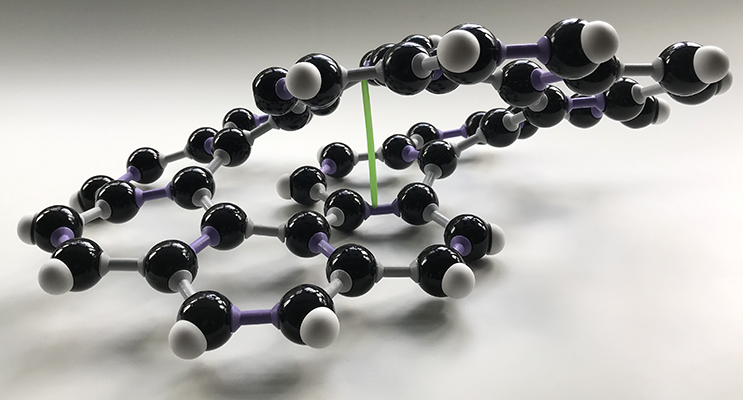
|
Micscape Lite - contributors sharing general articles on topics other than microscopy. by David Walker, UK |
The wonderful variety of molecules that either Nature or man creates fascinates me and enjoy making physical molecular models of the more interesting or recently newsworthy examples. I'm indebted to the Royal Society of Chemistry who after free registration, offer emailed weekly summaries of chemistry in the news, 'Re:action' and 'Chemistry World Weekly Newsletter' and it is from these that have highlighted the molecules below.
Infinitene
Synthetic organic chemists delight in trying to make exotic molecules that do not necessarily have a desired purpose. A fine example is the synthesis of a molecule resembling the infinity symbol. It was synthesized by Itami and coworkers at the University of Nagoya. The RSC news item entitled 'To Infinitene and Beyond' notes the previous success of this group in previously synthesizing a variety of other molecules. It was selected by Chemical and Engineering News to be one of the Molecules of the Year in 2021.
It is built from twelve benzene rings. The pi-electrons are sometimes delocalised across fused benzene rings in planar molecules but the workers report that they are only delocalised within each ring.
Infinitene model built using the Molymod kit. The green straw is a spacer not a bond. It approximates at this model scale the spacing reported by the workers of 3.2Å from their structural studies.
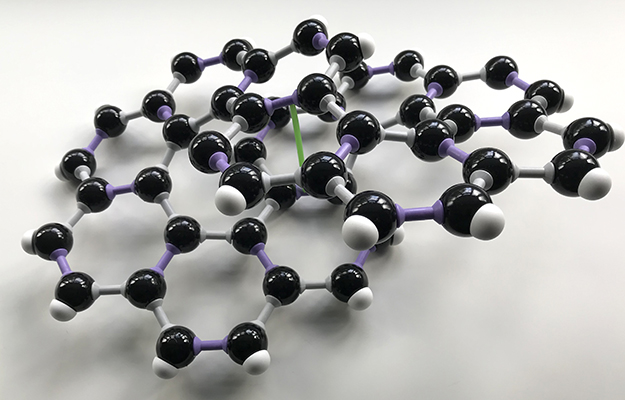
Teixobactin
The increasing ineffectiveness of current antibiotics largely because of their indiscriminate use has been widely discussed. Teixobactin is one of a class of new compounds attracting much interest as potential antibiotics. A summary on www.compoundchem.com with its accessible illustrated posters summarises its key features, mode of action and the way it was cultured from soil bacteria using an 'i-chip'.
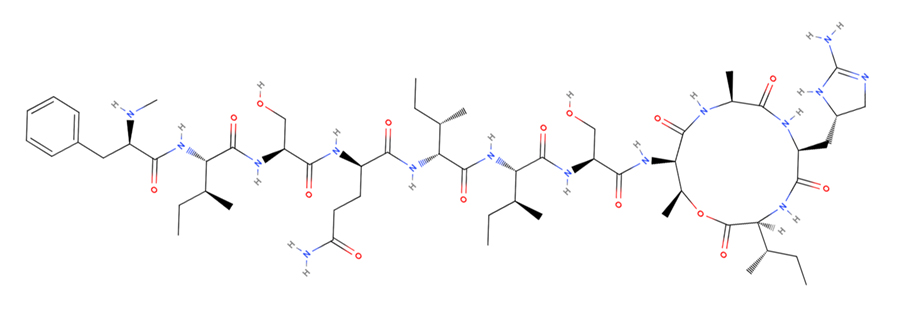
Teixobactin structural formula downloaded from a database using the open software MolView by Herman Bergwerf. There are a number of peptide like groups CONH and amino acid type groupings. How this complex molecule adopts a preferred 3D structure with its many single bonds which can rotate is the subject of many reported and ongoing studies. It is this 3D structure together with how the functional groups are placed which will be key to its antibiotic properties and how it interacts with cellular systems.
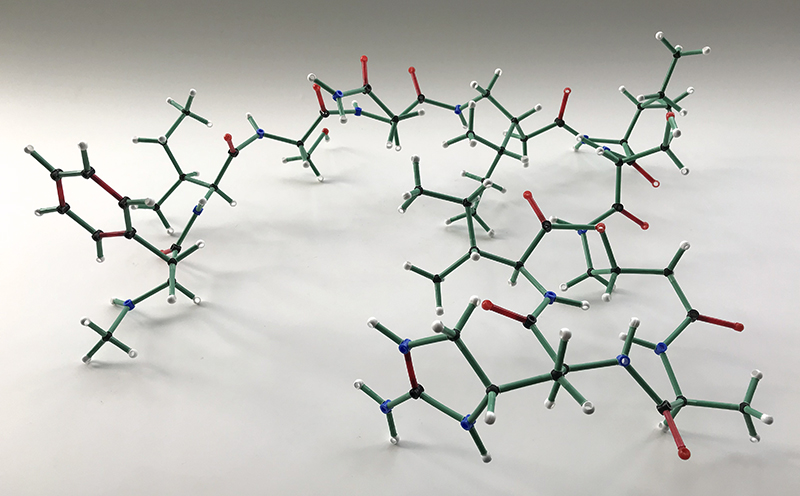
Ball and stick model using the Minit kit. This smaller scale kit is better suited than Molymod for large complex molecules. A weakness of the design is that the bonds easily rotate so it is difficult trying to set a correct 3D structure. Although found it tricky to interpret the published examples so this is not an accurate depiction of one of its likely 3D structures!
Light activated unidirectional molecular motor synthesized from green resources
Molecular motors are a particularly fascinating class of molecules that have and are being developed. An earlier Micscape article showed models of the molecular based vehicles built by competing research groups that participated in a 'Nano-Car' race (see links below). On a more serious level molecular motors are finding valuable roles such as for drug delivery and surface coatings. The molecular motor shown below has been synthesized using lignin, a sustainable green resource. The Royal Society of Chemistry's Chemistry World article provides a summary with link to the parent paper. The rotating axis is the central double bond which requires energy input via UV light at room temperature to overcome its natural tendency not to rotate (effected by isomerisation of the double bond). It was a collaborative effort between the group led by Katalin Barta at the University of Graz and Ben Feringa at the University of Groningen.
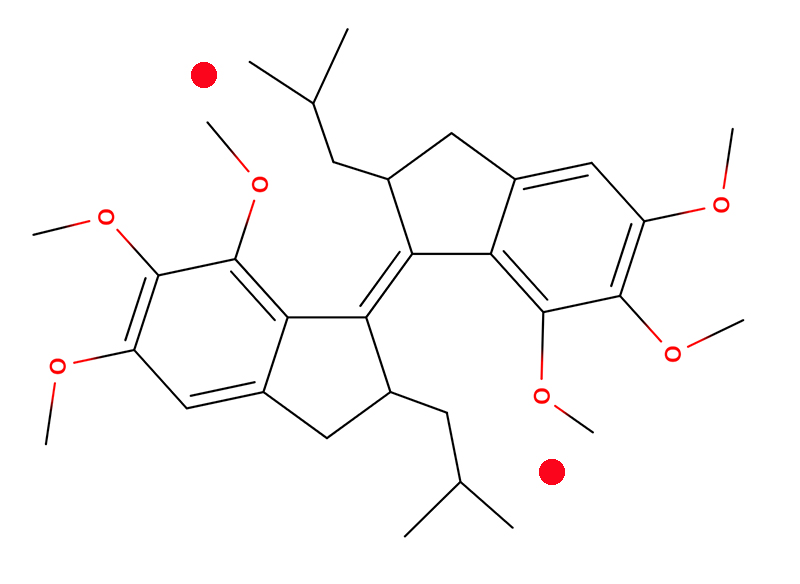
The molecule's structural formula drawn within the open software MolView by Herman Bergwerf. The red dots highlight the steric hindrance of the isopropyl and methoxy groups.
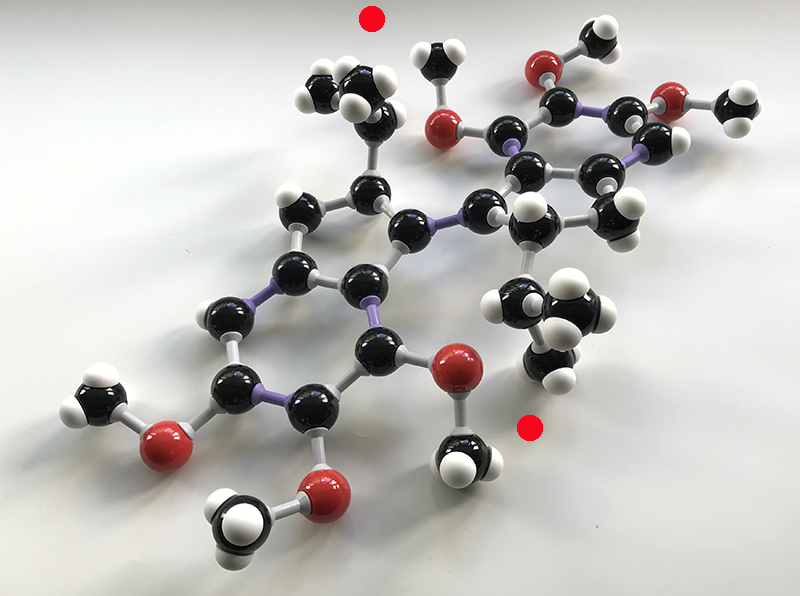
The molecule built using Molymod. Shown in not necessarily the ideal conformation.
Other Micscape Lite articles discussing and illustrating physical molecular models
A comparative review of five brands of molecular model kits. With notes on the educational merits of kits in an age of software. - compares five current major brands (ChemKits, Minit, Molecular Visions (Darling Models), Molymod, Orbit) with 'Molecules in the News' in Spring 2017 supplement (heptacene, triangulene and a molecular machine (a molecular ratchet). PDFs Apr.17
Product Review. Cochranes of Oxford Minit Proview DNA kit Apr.21
Comments to the author David Walker is welcomed.
Published in the May 2022 edition of Micscape.
Please report any Web problems or offer general comments to theMicscape Editor .
Micscape is the on-line monthly magazine of the Microscopy UK web site atMicroscopy-UK
©
Onview.net Ltd, Microscopy-UK, and all contributors 1995
onwards. All rights reserved.
Main site is atwww.microscopy-uk.org.uk.